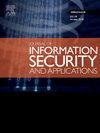基于深度神经网络方法的工业控制系统网络攻击检测
IF 3.7
2区 计算机科学
Q2 COMPUTER SCIENCE, INFORMATION SYSTEMS
Journal of Information Security and Applications
Pub Date : 2025-08-22
DOI:10.1016/j.jisa.2025.104206
引用次数: 0
摘要
历史案例表明,供水和处理系统是基础设施的重要组成部分,其相关的网络安全威胁日益严重。工业控制系统时间序列数据异常检测由于其重要意义而成为一个重要问题。本文提出了一种利用深度神经网络模型的统计测量和观测值与预测值之间的关系进行异常检测的方法。为了实现这一目标,我们比较了几种卷积和循环深度神经网络架构,包括卷积神经网络(CNN)、长短期记忆(LSTM)、循环神经网络(RNN)和门控循环单元(GRU)模型。我们的目标是从时间序列数据中自动学习传感器之间的关系,提高检测性能,并快速提取长期和短期依赖关系,以帮助检测可能的异常。分析了DNN模型在安全水处理(SWaT)和水分配(WADI)两个实际水系数据集上的性能。结果表明,在对两个数据集的预测性能进行评估时,GRU模型在减少预测值与实测值之间的绝对误差方面比其他模型更有效。此外,RNN模型成功检测了SWaT和WADI数据集的异常,f1得分分别为0.9848和0.7651。该研究通过广泛的测试和比较评估,为如何保护供水网络免受在线攻击提供了有价值的信息。本文章由计算机程序翻译,如有差异,请以英文原文为准。
Detecting cyberattacks based on deep neural network approaches in industrial control systems
Historical cases demonstrate the growing cybersecurity threats associated with water distribution and treatment systems, which are essential components of infrastructure. Detecting anomalies in time series data from industrial control systems has become an important issue due to its significance. This paper proposes an anomaly detection approach that utilizes statistical measurements and the relationship between observed and predicted values of deep neural network (DNN) models. To achieve this goal, we compared several convolutional and recurrent DNN architectures, including convolutional neural network (CNN), long short-term memory (LSTM), recurrent neural network (RNN), and gated recurrent unit (GRU) models. Our aim was to automatically learn the relationships between sensors from time series data, improve detection performance, and quickly extract long-term and short-term dependencies to help detect possible anomalies. The performances of the DNN models on two real water system datasets, Secure Water Treatment (SWaT) and Water Distribution (WADI) datasets, were analyzed. The results indicate that the GRU model is more efficient than the other models in reducing the absolute error between the predicted and observed values, when evaluated in terms of prediction performance for both datasets. Additionally, the RNN model demonstrated successful anomaly detection with high F1-score values of 0.9848 and 0.7651 for SWaT and WADI datasets. The study provides valuable information on how to secure water networks against online attacks through extensive testing and comparative evaluation.
求助全文
通过发布文献求助,成功后即可免费获取论文全文。
去求助
来源期刊

Journal of Information Security and Applications
Computer Science-Computer Networks and Communications
CiteScore
10.90
自引率
5.40%
发文量
206
审稿时长
56 days
期刊介绍:
Journal of Information Security and Applications (JISA) focuses on the original research and practice-driven applications with relevance to information security and applications. JISA provides a common linkage between a vibrant scientific and research community and industry professionals by offering a clear view on modern problems and challenges in information security, as well as identifying promising scientific and "best-practice" solutions. JISA issues offer a balance between original research work and innovative industrial approaches by internationally renowned information security experts and researchers.
 求助内容:
求助内容: 应助结果提醒方式:
应助结果提醒方式:


